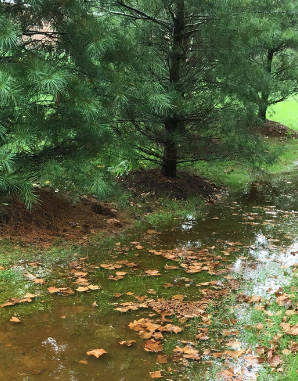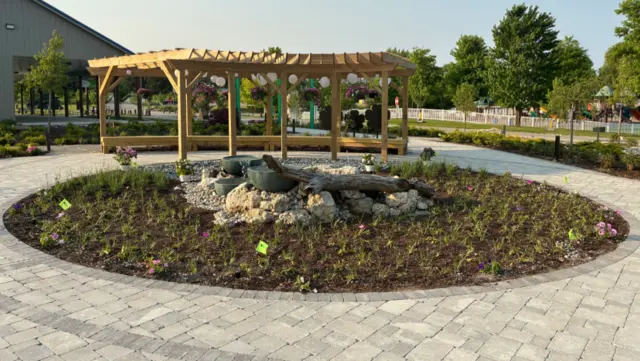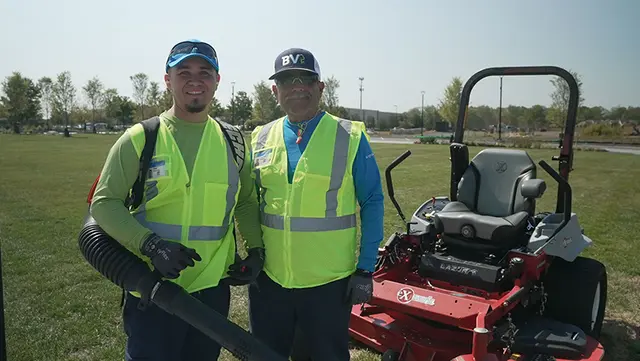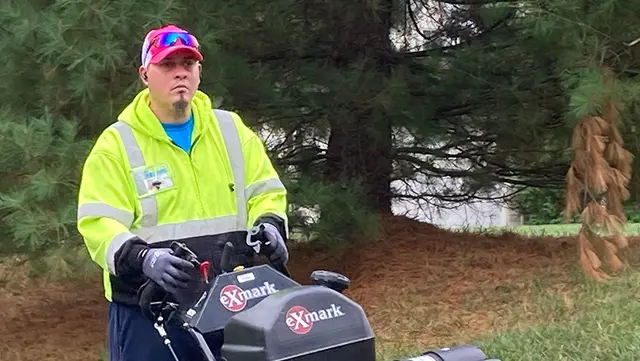
Drainage Problems? Control the Flow.
If pooling water and soggy sod are familiar fixtures for your property, then drainage issues may be to blame
Most properties weren’t designed to have a pond, but if you get one for free every time it rains, that’s not a bargain — that’s a drainage issue. If standing water doesn’t float your boat, read on to learn what can be done to stop it.

Make the Grade
Simply put, water should run downhill, away from your property. When that’s not happening, your landscape can suffer, killing grass and plants, causing erosion, and attracting nuisance insects, such as mosquitoes. Worse, if water accumulates around the foundation of buildings on your property, it can cause damage that’s costly to repair.
The fix is grading.
Grading involves leveling the land or adjusting slope to prevent accumulation and adjust the way water flows on your property. Your property may appear flat to the naked eye, but chances are, there are subtle elevation changes that a trained professional can spot.
Tight on Space? No Problem.
Sometimes there isn’t enough room to regrade — either because too much of the foundation around your building would be obscured, or because there isn’t enough space to raise the slope to the required height. When that’s the case, a French drain may be the solution.
French drains allow water to be re-routed elsewhere, similar to the way your gutters function. To install a French drain, your landscape partner would dig a trench at an appropriate slope, then install crushed rock, followed by a perforated pipe. The pipe allows water to filter in and then flow in the designated direction. Finally, the trench is filled with gravel or dirt to grade, concealing the pipe. While the description may sound utilitarian, a skilled landscape professional can produce an attractive result. Plus, as an added benefit, a French drain can direct water to a barrel catchment, where you can harvest rainwater for your landscape.
In the event you have a downspout that dumps rainwater into an inconvenient place, such as a walkway, and it can’t be relocated, you might consider re-routing it via a corrugated piping system. The pipe connects to the downspout and diverts the water underground. Water can be transferred to a dry well, an open-bottom barrel buried underground. Dry wells slowly disperse the excess water deep into the ground, preventing oversaturation.
Follow Mother Nature’s Lead
If the options above don’t fit the bill, look to nature for inspiration. Creeks and swales are just two of Mother Nature’s answers to directing runoff. Your landscape partner can incorporate these solutions by creating a man-made version for your landscape. To create a swale, your landscape partner would create a shallow drainage ditch, lined with gravel or stones, and accented with plantings that can tolerate the increased moisture. Alternatively, it can be turned into a creek bed, designed to look attractive wet or dry.
A rain garden could also be an option for a low spot that collects water. To create a rain garden, your landscape partner would install plans that thrive in wet soil and incorporate drainage, if needed, to help manage excess water. Rain gardens are an environmentally-friendly way to reduce runoff and filter pollutants. While a rain garden won’t dry out your low spot, it will make it more attractive, and with the right design, you can prevent it from becoming a puddle.



